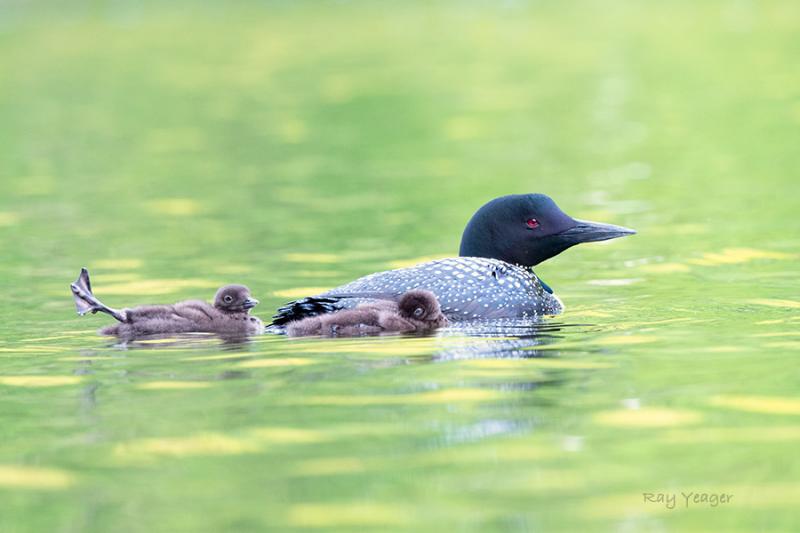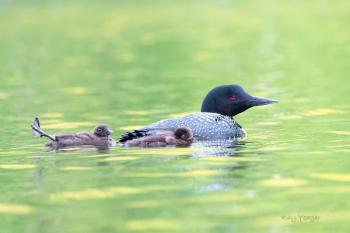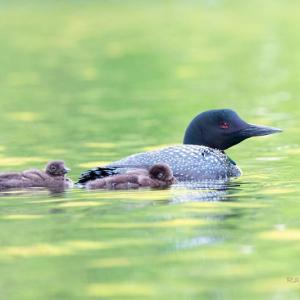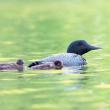Loon count held steady in 2019 despite various factors affecting population
FALMOUTH — A haunting tremolo, the wavering call of a loon, is one of the most evocative sounds in nature, according to the Maine Audubon, in a news release. It’s also one of the iconic sounds of Maine, and people value it. There’s no better proof of that than the annual Maine Audubon Loon Count.
In the southern half of Maine, including all areas south of the 45th parallel, the Audubon estimates the 2019 loon population to include 3,219 adult loons and 372 chicks. Though numbers were a bit below 2018 numbers, the loon population in Maine appears to be healthy and holding steady, according to the news release.
Every year, volunteers head out onto local lakes and ponds on the third Saturday in July to count Common Loons. In 2019, the 36th annual Maine Loon Count, a total of 1,414 community scientists participated in (up from 1,350 in 2018), covering 292 lakes.
All of the data has been submitted, the numbers have been crunched.
A number of factors may have influenced this year’s findings. Most impactful may have been heavy spring rains which flooded some nests and caused egg loss. (Common Loons can't walk very well on land and so build their nests very close to the water's edge, making nests susceptible to flooding from high water or boat wake.) Some loon counters also reported loons abandoning nests due to high concentrations of black flies in the early season, as well as more predation from Bald Eagles and other wildlife.
New this year, Maine Audubon received a number of calls reporting concerns about "wake boats," which kick up a large enough wake for someone to surf behind the boat. Several callers believed that even operating outside the 200-foot no-wake zone, the wakes generated by these new boats could wash eggs out of nests when they reach shore.
Loon populations have increased markedly since the count began over three decades ago. The no-wake law, requiring speeds that don’t generate wakes within 200 feet of shore, was enacted to prevent shoreline erosion, but has benefited loons by reducing the number of nests flooded by boat wakes. Phased-in bans on types of lead fishing tackle are also addressing lead poisoning in adult loons, one of the leading causes of mortality.
The annual loon counters also serve as the eyes and ears for loons out on their lakes and have taken important steps to protect loons and spread the word locally about what Maine residents can do to help loons in their area.
The count began in the early 1980s, when Maine Audubon realized that it didn't know much about this iconic bird’s population. Were loons in trouble? What threats did they face? Working with a University of Maine statistician, Maine Audubon ecologists designed a survey using volunteers from all over the state to visit their local lake or pond for a single dedicated half-hour in July to count all the adult and young Common Loons they could find, and send in their numbers. Maine Audubon biologists use the data to estimate the number of loons in the southern half of Maine (though some northern Maine lakes are counted, it is not enough to give a reliable population estimate for this part of the state, said Audubon).
For more information, visit: maineaudubon.org/loons
Event Date
Address
United States





























